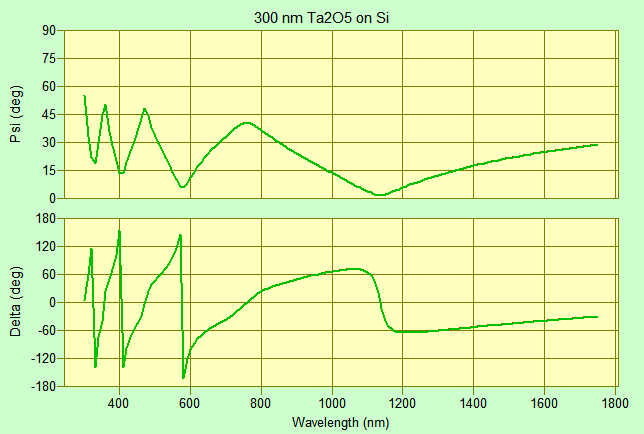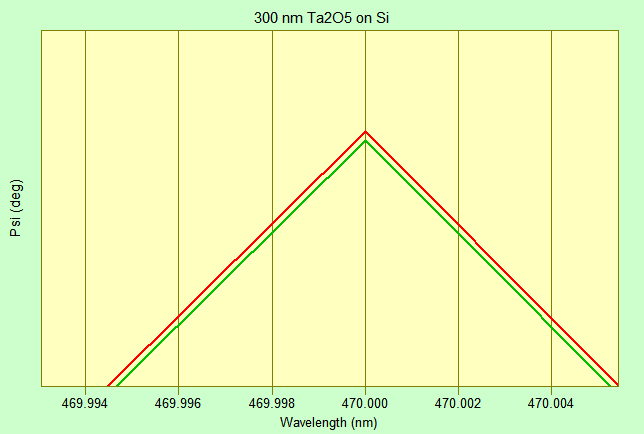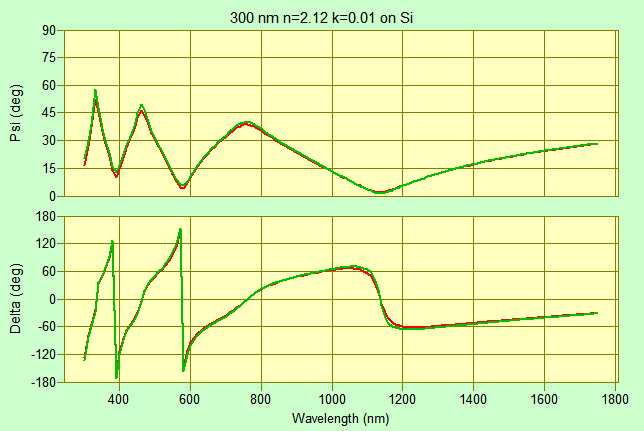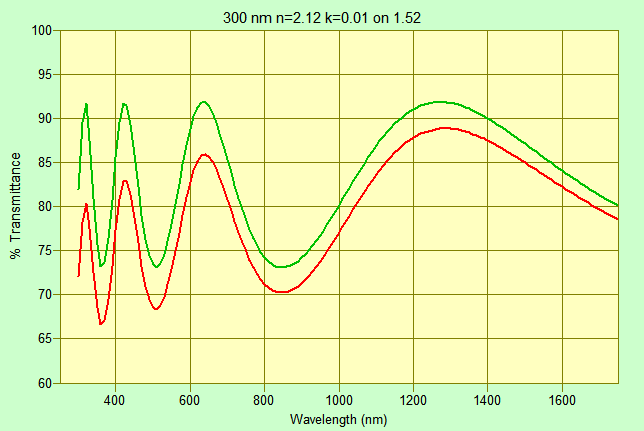|
Ellipsometry when k~0
While FilmStar is rarely used for ellipsometry, a recent inquiry
encouraged us to reexamine and once
again (previous 2014) verify DESIGN's ellipsometric algorithms.
We were given Psi/Delta tables with the hope that FilmStar could determine k values for ~300 nm Ta2O5 on Silicon. We thought this unlikely, but there's no substitute for examining the numbers. While simulations verify that ellipsometry is insensitive to very low k, one might use Psi/Delta to deduce n and %T to compute k. A popular technique not requiring ellipsometry is discussed here. To verify our calculations, we compared FilmStar ellipsometry Psi/Delta (.faw) with Kondoh's Excel workbook model ellips4.xls, modified for 300 nm Ta2O5 on Si at 75° (.xlsx). In the graph below the green trace shows Kondoh Excel values while the underlying red trace shows FilmStar values.  Where's the red trace? With extreme magnification (<F5> Zoom, note the wavelength scale), we eventually find round-off differences:  Our Ta2O5 file did not include absorption. How would that affect Psi and Delta? To simplify, consider a film where n=2.12 and k is either 0.0 (green trace) or 0.01 (red trace). k=0.01 is well above values expected for Ta2O5. As shown below, ellipsometry is insensitive to very low k variations.  Compare with transmittance curves at 0° where the effects of nonzero k are clearly shown and easily measured. Once again k=0.0 (green trace) and 0.01 (red trace). 
When deducing n via ellipsometry, the engineer's job
is not done because optical properties at 75° need to be verified and
possibly adjusted for 0°.
Addendum for FilmStar Users
If FilmStar Delta values differ from other software, there are two adjustments to try: 1. Phase Convention in Setup...Graph Axes  2. Phase Difference in Setup...Parameters. 
The displayed settings provide agreement with
Kondoh's Excel Workbooks.
|
Copyright © 2023 FTG Software Associates
Last updated on
January 31, 2023